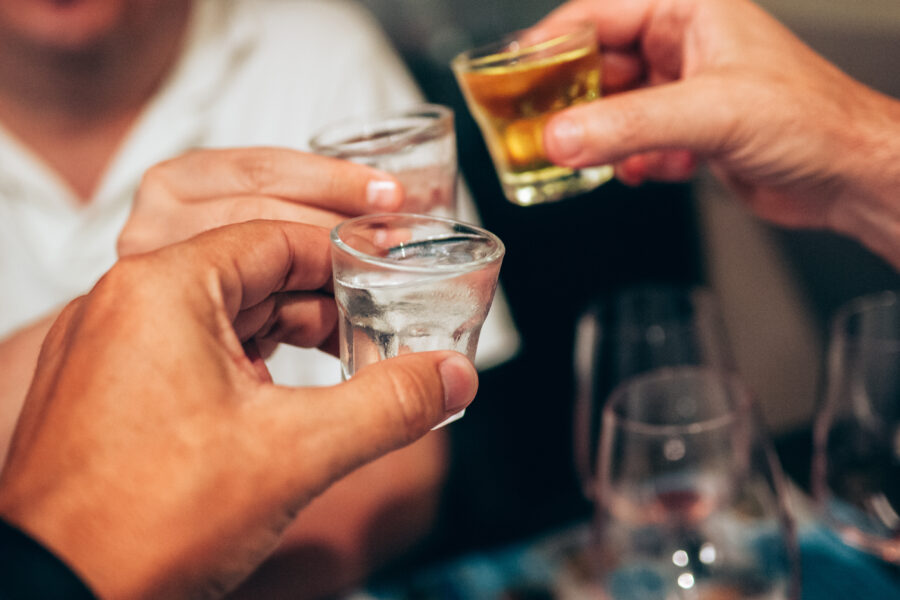Holidays should be memorable for the right reasons, but in some areas, the risk of drink spiking and methanol poisoning is a real and growing threat. Alcohol contaminated with methanol and targeted spiking incidents can lead to serious illness and death.
It is important to recognise the warning signs and learn about practical steps that can help to reduce the risk.
Check FCDO travel advice for your destination and sign up to email alerts for the most up-to-date information before you travel.

What is spiking?
Spiking is when someone sneaks something into your drink, like drugs or harmful substances, without you knowing. It can be done to make you blackout or become incapacitated.
How to spot spiking
It’s not always obvious when a drink has been tampered with, but here’s what to look out for:
- Feeling more drunk than you should, drowsy, or confused.
- Some people experience hallucinations, paranoia, and memory blackouts.
- Trust your gut – if something feels wrong, it probably is.

How to reduce the risk of spiking
- Keep an eye on your drink and do not leave it unattended. If it smells or tastes odd, do not drink it.
- Do not accept drinks from strangers.
- Alcohol can hit harder abroad because measures are sometimes larger, and dehydration from heat can make you feel worse.
- Check FCDO travel advice for your destination and sign up to email alerts for the most up-to-date information before you travel.
- Check Stamp Out Spiking for more information on how to prevent spiking.
- Plan your trip home. Arrange transport before going out and note the address of where you’re staying. Stay in contact with your friends and, if you’re staying at the same accommodation, go home together.
What is methanol poisoning?
Methanol is toxic even in small amounts. It is an industrial alcohol made from distilling wood and can be found in many commercial products, like antifreeze, fuel and paint thinners. In some parts of the world methanol products are sometimes illegally mixed with ‘real’ alcohol such as spirit-based drinks and cocktails.
How to spot the signs of methanol poisoning
Spotting methanol poisoning can be difficult because at first it can affect you in the same ways as ‘real’ alcohol. Some early symptoms – like vomiting – can seem like a bad hangover. But travellers should watch out for a hangover that feels worse than it should. Signs to watch for:
- Early signs: vomiting, poor judgement, loss of balance and drowsiness.
- 12-48 hours after drinking: abdominal pain, vertigo, hyperventilation, breathlessness, blurred vision and/or blindness, coma and convulsions. If you or someone you are travelling with have any of these symptoms seek urgent medical attention.
- Vision issues are a red flag and can also appear 12-48 hours after the first drink. Methanol poisoning can cause blurry vision, trouble looking at bright lights, and in some cases complete blindness. “Snowfield vision” (seeing snowy static like an old TV) or tunnel vision can also occur. If you have any of these symptoms, seek urgent medical help.
Urgent medical attention could save your life or prevent serious complications.

How to reduce the risk of methanol poisoning
It is not possible to completely remove the risks from methanol poisoning when drinking alcohol but you can take steps to reduce the risk:
- Avoid free cocktails or shots, unlabelled bottles and unusually cheap or discounted drinks claiming to be brand name alcohol.
- Be careful about spirit-based drinks such as those ‘on the rocks’, shots, cocktails, buckets or jugs.
- Choose branded beers, ciders, wines and premixed cocktails in sealed bottles and cans.
- Stick to licensed places: buy drinks from licenced stores, bars, clubs, restaurants and hotels. Avoid homemade, ‘bootleg’ or streetside alcohol.

How is methanol poisoning treated?
Seek urgent medical attention if you or someone you are travelling with show the signs of methanol poisoning after drinking. Here’s what to do:
- Get medical help straight away. Don’t wait to “see if it gets better” or go to bed and try to sleep it off. Call for emergency help or head to the nearest hospital. You can find phone numbers for emergency services in the health section of each country’s travel advice.
- What the doctors will do: They’ll give you an antidote like ethanol or a drug called Fomepizole to stop methanol from turning toxic in your body. You might also get dialysis to flush out the methanol and fix the damage.
Time matters: Treatment is most effective within 10–30 hours of drinking methanol. Don’t delay.